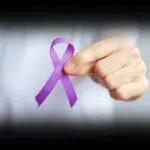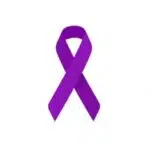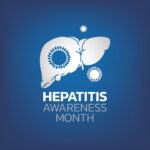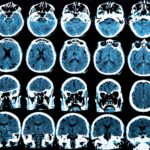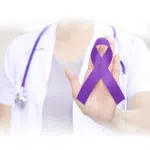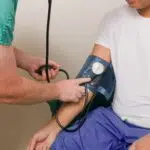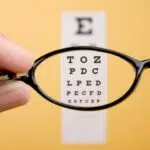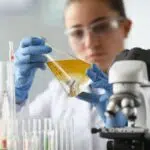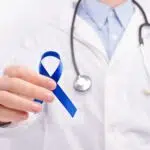National Toxic Encephalopathy and Chemical Injury Awareness Month is observed in May every year. It was founded by the National Toxic Encephalopathy Foundation to educate the public about the harmful effects of some chemicals in consumer products on human health. Chemicals are everywhere; we apply, inhale, or ingest them. Increasing our knowledge about them will aid us in making more informed decisions on our health and that of others. National Toxic Encephalopathy and Chemical Injury Awareness Month exists so we get to learn which chemicals to avoid and the lifestyle changes needed to keep contamination at bay.
History of National Toxic Encephalopathy and Chemical Injury Awareness Month
Pesticides, bathroom air fresheners, fragrances, industrial and cleaning solvents, and cosmetics, among other daily products we use, contain toxic substances that can harm not just the environment but also the human body. When we are exposed to them, neurotoxicity occurs. Because of this, the regular functioning of the nervous system changes.
Symptoms of neurotoxicity may appear immediately after exposure to toxins or may be delayed. These may include short-term memory loss, insomnia, limb weakness or numbness, headaches, cognitive and behavioral problems, and sexual dysfunction. In the long term, neurotoxicity can disrupt or even kill neurons, which are the cells that transmit and process signals in the brain and the nervous system. This is what is known as toxic encephalopathy.
Treatment for toxic encephalopathy is mainly for the symptoms that victims experience and varies depending on how severe the case is. Treatment options include diet changes and nutritional supplements, cognitive exercises, filtered water therapy, anticonvulsants, dialysis, and organ replacement surgery in some severe cases. Permanent abstinence from alcohol is encouraged to prevent further loss of neurocognitive function. This is because alcohol is a well-established neurotoxin that causes toxic encephalopathy.
The symptoms of toxic encephalopathy are similar to many psychiatric, metabolic, inflammatory, neoplastic, and degenerative diseases of the nervous system. Physicians need to undertake good history-taking and a comprehensive neurological examination to diagnose toxic encephalopathy.
National Toxic Encephalopathy and Chemical Injury Awareness Month timeline
Physicians Jacob Valk and Marjo S. van der Knaap publish findings on their study of toxic encephalopathy.
Dr. Roger G. Feldman and colleagues write a paper that describes neurobehavioral effects in a 57-year-old painter who was exposed to solvents for more than 30 years.
Yangho Kim and Jae Woo Kim publish a paper on toxic encephalopathy.
About 7% to 31% of hospitalized patients due to COVID-19 are found to have toxic metabolic encephalopathy.
National Toxic Encephalopathy and Chemical Injury Awareness Month FAQs
Is toxic encephalopathy easily recognizable?
Toxic encephalopathy may go unrecognized without a detailed neurological examination and comprehensive work history.
Is toxic encephalopathy curable?
Toxic encephalopathy is usually irreversible.
What are the major clinical syndromes of toxic encephalopathy?
Diffuse acute or chronic toxic encephalopathy, cerebellar syndrome, parkinsonism, and vascular encephalopathy are some of the major clinical syndromes of this condition.
How to Observe National Toxic Encephalopathy and Chemical Injury Awareness Month
Check your products
This is a suitable time to read the ingredient label of the products we use. Check if any of the ingredients are toxic and consider replacing questionable products with safer ones.
Tell others
Let your loved ones know about the potential dangers of chemicals in consumer products. This will help them make informed choices about their purchases.
Get a medical exam
Visit your doctor for a toxic encephalopathy check. If you happen to be at risk and catch it early, you can manage the condition better.
5 Interesting Facts About Chemicals
Air fresheners can make us sick
A certain study on toxic encephalopathy showed that 19% of the general population reported adverse health effects from air fresheners.
Chemical use abounds in the U.S.
The United States Environmental Protection Agency states that more than 65,000 commercial chemicals are currently used in the U.S., and 2,000 to 3,000 new chemicals are added to this list each year.
Toxins cause trouble for the brain
Both gray and white matter of the brain can be easily damaged by toxins.
Exposure affects the severity of symptoms
For toxic encephalopathy, the higher the level of exposure, the more severe the symptoms.
The nervous system is fragile
The central nervous system has a limited capability to regenerate compared to other body organs.
Why National Toxic Encephalopathy and Chemical Injury Awareness Month is Important
It is educational
Most people are unaware of the harmful chemicals they get exposed to every day. This month raises awareness about the threats that toxin exposure poses to health.
It promotes good health
This month helps us make better lifestyle choices about the products we use. The less we're exposed to toxins, the better our health will be.
It highlights research
Medical professionals continue to research toxic encephalopathy. This month recognizes their efforts.
National Toxic Encephalopathy and Chemical Injury Awareness Month dates
| Year | Date | Day |
|---|---|---|
| 2026 | May 1 | Friday |
| 2027 | May 1 | Saturday |
| 2028 | May 1 | Monday |
| 2029 | May 1 | Tuesday |
| 2030 | May 1 | Wednesday |





























































